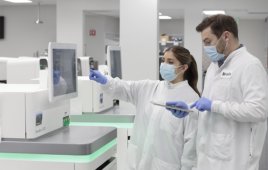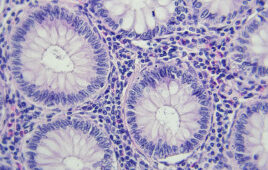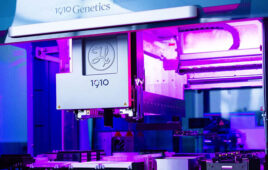University of Cincinnati (UC) cancer cell biologists have identified a distinct gene linked to increased lung cancer susceptibility and development. They say this gene—known as RGS17—could result in a genetic predisposition to develop lung cancer for people with a strong family history of the disease.
With further investigation, they believe the gene could be used to identify high-risk patients who may benefit from earlier, more aggressive lung cancer screening.
‘Understanding how the RGS17 gene impacts cancer development could change clinical diagnosis and treatment as radically as discovery of the breast cancer genes (BRCA1 and BRCA2) did,’ explains Marshall Anderson, PhD, who has led the multi-institutional Genetic Epidemiology of Lung Cancer Consortium (GELCC) studying the genetic basis of lung cancer since 1997. ‘A proven genetic test could help us identify people at risk before the disease progresses.’
‘This study represents a significant contribution to our understanding of lung cancer susceptibility and is another step toward to the goal of preventive medicine,’ says David Christiani, MD, MPH, a professor of occupational medicine and environmental health at the Harvard School of Public Health, whose two-page commentary on the study is published in conjunction with the GELCC team’s scientific findings. ‘The authors undertook a daunting challenge of performing a family-based study of lung cancer in an effort to identify specific causal genes.’
Genes, which are located in fixed positions on the cell’s chromosomes, carry the DNA code that determines inherited characteristics, including a risk of certain diseases.
For this study, Anderson and his multi-institutional team collected biological samples from numerous multigenerational families with five or more members who were affected by lung cancer. Through a combination of what is known as ‘fine mapping’—where genetic information is dissected and analyzed—and genetic association studies, researchers identified RGS17 as a major candidate susceptibility gene for familial lung cancers.
Research has shown that lung cancer can occur sporadically—where people have no known risk factors or family history—or hereditarily, occurring in multiple members of the same family. In 2004, Anderson’s team reported the first genetic evidence of a major lung cancer ‘susceptibility locus’ on chromosome 6, and evidence of a susceptibility region on three other chromosomes.
The region of the original chromosome where the lung cancer markers were found contained about 100 genes, including several genes suspected to be involved in tumor suppression and cell growth.
Using a genetically altered mouse model, researchers determined that when RGS17 was suppressed, lung tumors shrank, proving the gene was involved in cancer development and must be present for cancer growth.
‘What was most interesting is that this same gene was over-expressed in 60 percent of the samples from non-hereditary lung tumors,’ explains Anderson. ‘This suggests that perhaps epigenetic factors may be contributing to abnormal genetic development.’
The UC-led team will conduct additional research to investigate how environmental factors may influence familial cancer development.
Release Date: April 15, 2009
Source: University of Cincinnati
Filed Under: Genomics/Proteomics




